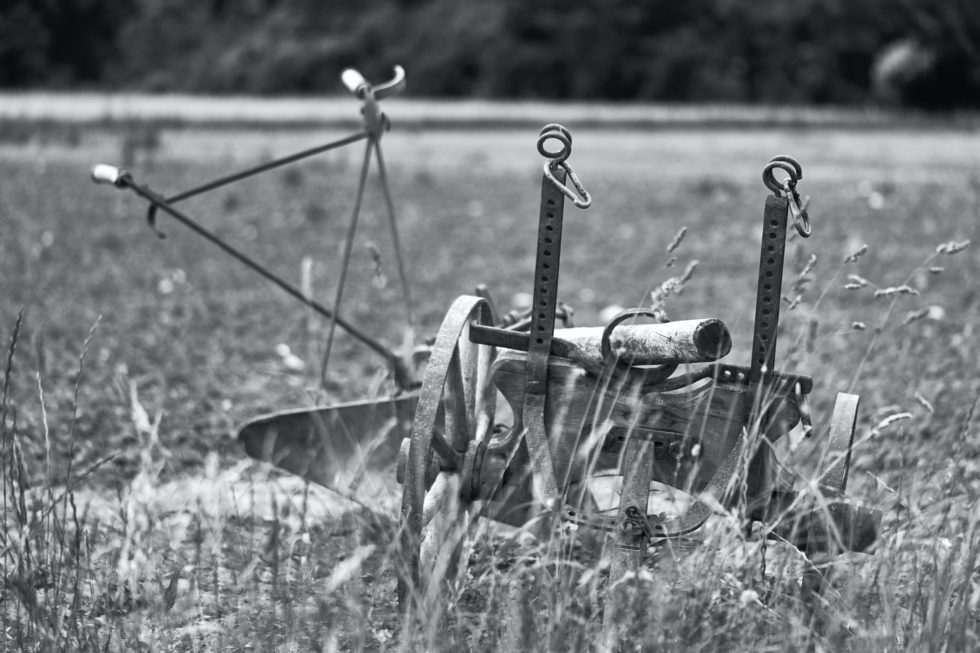The conventional system of inversion tillage has long been the go-to method for many farmers. In more recent years though, the many side effects of this system have emerged; particularly on soil health. Inversion tillage is now recognised as a non-sustainable method of farming. Agro-scientists have pointed towards various factors that show the problems with non-conventional tillage, yet farmers still continue to carry on this method of agriculture mostly due to a lack of knowledge about other available soil management options.
Inversion tillage is commonly practiced by ploughing almost 70% of the topsoil and sowing the seeds within it. This soil inversion has immediate benefits in yield and weed control, but it also damages the integrity of the soil, hampering its ability to retain moisture and necessitating heavy usage of fertilisers. The topsoil stores the majority of soil nitrogen, and destroying this layer through tillage removes necessary nutrients from the seedbed. Alongside serious environmental impacts, the longevity of the soil as a viable means of production is also reduced.
The current state of agricultural soil is quite vulnerable. Farmers are required to apply multiple types of fertilisers and other chemicals to generate sufficient yield, using a huge amount of water in the process. With widespread adoption of non-inversion methods of tillage, however, much of this damage can be avoided.
What we are talking about is of course shallow tillage practices. By working only 20-50mm of the topsoil, ultra-shallow tillage leaves the integrity of the soil intact. The soil also retains its capacity to hold moisture. Furthermore, non-inversion tillage is more effective at incorporating crop residue to diffuse organic matter throughout the soil, allowing for eventual reduction in the usage of fertilisers. Overall, a shift from inversion tillage to shallow tillage provides multiple benefits for farmers.
Practicing Non-Inversion Shallow Tillage
Non-inversion tillage comes in different shapes and sizes. It usually involves less passes and working more shallow, as well as leaving some residue on the soil surface. Non-inversion tillage includes practices such as direct drilling, strip tillage and shallow cultivation. Kelly Engineering has spearheaded a new method of non-inversion shallow tillage; the Kelly Disc Chain. A series of linked steel discs roll over the soil surface, engaging the top 2-5cm of the seedbed. This tool mulches and incorporates stubble residue without burying it, leaving a layer of soil cover that insulates the seedbed against erosion and evaporation.
Furthermore, shallow tillage practices are highly environment friendly. Maintaining the biological balance of the soil is crucial towards developing a sustainable method of farming and shallow tillage practices are a key method towards achieving this.
There are further benefits of using a disc-chain based mechanism for tillage. It allows for easy incorporation of cover crops, removes weeds and enables water conservation. For farmers looking to introduce sustainability into their farming process, tools like the Kelly Tillage System can be the first step towards establishing an environmentally friendly system.
Reduced tillage intensity stands alongside crop rotation and ground cover as one of three core tenets of conservation agriculture. While moving to non-inversion tillage may lead to an initial reduction in yield quantity at first, it will provide a sustainable process that may prove more profitable in the long run. It also balances yield loss with significant savings in herbicides, fuel and labour. If you’re still practicing inversion tillage, now is the time to make a change. Contact your local Kelly dealer and ask about the Kelly Diamond Harrow – the results will speak for themselves.


